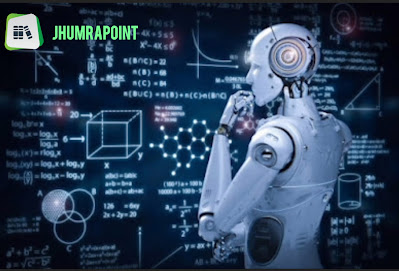Introduction:
What is Artificial Intelligence?
Artificial Intelligence (AI) refers to the simulation of human intelligence in machines that are designed to think and act like humans. These machines can be trained to perform tasks that typically require human intelligence, such as visual perception, speech recognition, decision-making, and language translation.History of AI:
AI has been a topic of interest for centuries, with ancient myths featuring robots and automated machines. However, it wasn't until the 1950s that AI research began in earnest, with the Dartmouth Conference considered the birthplace of AI as a field of study. Since then, AI has come a long way, and today it is used in a variety of applications, from self-driving cars to virtual personal assistants.
Types of AI:
- Reactive Machines: These AI systems can only react to the present, and do not have the ability to use past experiences to inform future decisions. Examples include Deep Blue, the computer that beat world chess champion Garry Kasparov in 1997.
- Limited Memory: These AI systems can use past experiences to inform future decisions, but they can only remember what they need to make decisions in the short term. Examples include self-driving cars that use cameras and sensors to avoid obstacles.
- Theory of Mind: These AI systems can understand human emotions and beliefs and use them to inform their decisions. Examples include virtual personal assistants like Siri and Alexa.
- Self-Aware: These AI systems have a sense of self and are conscious. Currently, this type of AI does not exist.
Applications of AI:
- Healthcare: AI is used in healthcare to analyze patient data and diagnose diseases. It can also assist in drug discovery and treatment planning.
- Finance: AI is used in finance to detect fraud, analyze market trends, and make investment decisions.
- Retail: AI is used in retail to personalize shopping experiences, recommend products, and optimize pricing.
- Manufacturing: AI is used in manufacturing to improve efficiency, quality control, and supply chain management.
The Future of AI: Possibilities and Challenges
Introduction:
The future of AI is both exciting and uncertain. While AI has the potential to bring about tremendous advancements and improvements in many areas of our lives, it also poses certain challenges and risks. In this section, we will explore some of the possibilities and challenges that lie ahead for AI.
Possibilities of AI:
- Augmenting Human Intelligence: AI has the potential to augment human intelligence by providing us with the tools and information we need to make better decisions and solve complex problems.
- Improving Quality of Life: AI has the potential to improve our quality of life by automating mundane tasks, freeing up time for leisure and creativity.
- Transforming Industries: AI has the potential to transform a wide range of industries, from healthcare and finance to retail and manufacturing.
- Solving Global Problems: AI has the potential to help us solve some of the world's biggest challenges, such as climate change, poverty, and disease.
Challenges of AI:
- Bias and Discrimination: AI systems can perpetuate existing biases and discriminations, leading to unfair and unjust outcomes.
- Job Displacement: AI has the potential to displace human workers, leading to unemployment and economic inequality.
- Security Risks: AI systems can be vulnerable to hacking and other forms of cyberattacks, potentially leading to serious consequences.
- Responsibility and Ethics: As AI becomes more advanced and integrated into our lives, it is important to consider questions of responsibility and ethics, such as who is accountable for the actions of autonomous machines.
The Impact of AI on Society
Introduction:
AI has already had a significant impact on society, and this impact is only set to grow as AI becomes increasingly advanced and integrated into our lives. In this section, we will explore the ways in which AI is affecting society, both positively and negatively.
Positive Impact:
- Increased Efficiency and Productivity: AI has the potential to increase efficiency and productivity in a wide range of industries, leading to economic growth and improved quality of life.
- Improved Healthcare: AI is being used in healthcare to diagnose diseases, develop new treatments, and improve patient outcomes.
- Enhanced Education: AI has the potential to enhance education by providing personalized learning experiences and enabling teachers to focus on the aspects of teaching that require human interaction.
- Increased Accessibility: AI has the potential to increase accessibility for people with disabilities, such as through the development of assistive technologies.
Negative Impact:
- Job Displacement: As AI becomes increasingly advanced, it has the potential to displace human workers, leading to unemployment and economic inequality.
- Privacy Concerns: AI has the potential to raise serious privacy concerns, as large amounts of personal data are collected and analyzed.
- Bias and Discrimination: AI systems can perpetuate existing biases and discriminations, leading to unfair and unjust outcomes.
- Responsibility and Ethics: As AI becomes more advanced and integrated into our lives, it is important to consider questions of responsibility and ethics, such as who is accountable for the actions of autonomous machines.

